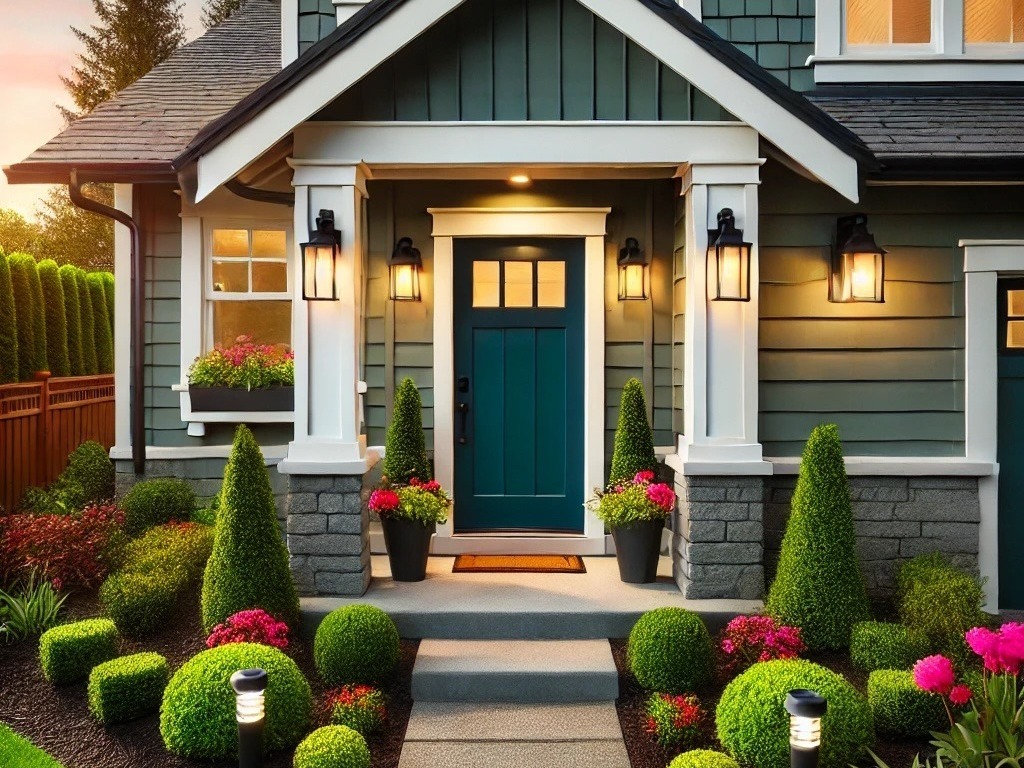
Imagine stepping out your back door and onto a peaceful, winding trail that leads you through your own backyard oasis. A home trail can be a beautifully functional addition to your landscape, offering a space to unwind, reconnect with nature, and even encourage daily movement. Whether you have a sprawling estate or a compact yard, a thoughtfully designed path can transform your outdoor space into a sanctuary.
Why Create a Home Trail?
A backyard trail isn’t just a decorative element—it’s an experience. A well-planned trail can serve multiple purposes:
Encourages Outdoor Activity: A personal walking path makes it easy to take a leisurely stroll, meditate, or simply stretch your legs in a natural setting.
Enhances Landscaping: A beautifully designed trail adds depth and character to your backyard, making it more visually appealing.
Increases Property Value: A functional, well-maintained outdoor space is a desirable feature that can boost your home’s value.
Provides a Therapeutic Escape: Spending time in nature has been proven to reduce stress, improve mood, and promote relaxation. A backyard path allows you to enjoy those benefits daily.
Planning Your Home Trail
Before you start building, consider these key factors:
1. Purpose and Functionality
Are you looking to create a peaceful retreat, a garden pathway, or a fitness trail? The design should reflect your needs.
A meditative trail might include soft curves, shaded spots, and quiet resting areas with benches.
A garden path can weave through flower beds, raised garden boxes, or a vegetable garden to add accessibility and charm.
A fitness trail might have a longer, winding path with stepping stones or a compact gravel surface for better grip and movement.
2. Choosing the Right Materials
Selecting the right materials is crucial for both the look and durability of your trail. Here are some options:
Gravel or Crushed Stone: Budget-friendly and excellent for drainage. Ideal for informal paths.
Flagstone or Pavers: Offers a polished, natural appearance. Perfect for structured garden trails.
Mulch or Wood Chips: Provides a soft, earthy feel that blends seamlessly into natural settings.
Concrete or Brick: A more permanent option, great for modern or structured landscapes.
Each material has its pros and cons, so consider your climate, budget, and maintenance preferences before making a choice.
3. Designing the Flow
The way your path moves through your yard matters. A natural and inviting design will feel organic rather than rigid. Here are some tips:
Curved Paths: Gently curving trails create a sense of mystery and encourage exploration.
Wide vs. Narrow Sections: A wider entry leading into a narrower trail can create a sense of invitation.
Path Lighting: Adding solar-powered lanterns or LED path lights enhances safety and ambiance for nighttime use.
Incorporating Landscaping into Your Trail
To create a trail that feels like part of the landscape rather than an afterthought, consider integrating these elements:
Native Plants: Lining your trail with local plants ensures easy maintenance and a natural look.
Shrubs and Small Trees: Planting along the edges can provide privacy and a sense of enclosure.
Water Features: A small pond, a birdbath, or a trickling fountain adds tranquility to the space.
Seating Areas: Placing a bench or a hammock along the trail invites rest and contemplation.
Arches and Trellises: These structures can add elegance and frame the path beautifully.
Maintaining Your Home Trail
To keep your path looking great year-round, regular maintenance is key:
Weed Control: Lay landscape fabric under gravel or mulch to prevent weeds from taking over.
Seasonal Cleanup: Remove fallen leaves and debris to maintain a clean and safe walking space.
Replenish Materials: Over time, mulch or gravel may need to be topped up to keep the trail intact.
Trim Overgrowth: Ensure surrounding plants don’t obstruct the path by trimming back shrubs and trees.
Making It Your Own
Your home trail should be a reflection of your style and needs. Whether you envision a simple footpath lined with wildflowers or a sophisticated, stone-paved walkway through a landscaped garden, the possibilities are endless. By carefully planning the layout, selecting the right materials, and integrating natural elements, you can create a trail that enhances both the beauty and functionality of your backyard.
Conclusion
A home trail is more than just a pathway—it’s a personal retreat that connects you to nature while adding beauty and value to your property. With thoughtful design, the right materials, and a little creativity, you can transform any backyard into a serene, inviting space perfect for daily walks, quiet reflection, or simply enjoying the outdoors. Whether you seek relaxation, fitness, or an aesthetic boost to your landscape, a well-designed trail offers countless benefits. So, start planning today and bring your dream outdoor escape to life!
 Add Row
Add Row  Add
Add 




 Add Row
Add Row  Add
Add 


Write A Comment